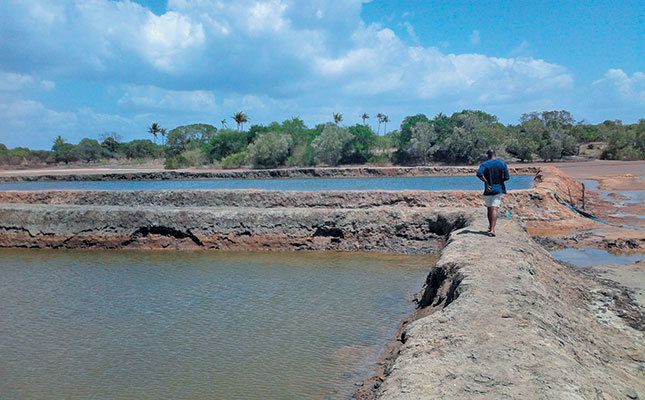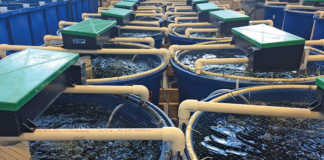
Photo: Nicolas James
Brackish water is unsuitable for irrigation, drinking or stock watering. So could such water be used for aquaculture? With tilapia, the answer is undoubtedly yes.
All species of tilapia are euryhaline (salt-tolerant) and it is well known that when rivers flood, Mozambique tilapia (Oreochromis mossambicus) may enter the sea and pass into other estuaries along the coast, increasing the range of this species.
The Oreochromis genus, which includes Mozambique and Nile tilapia, can tolerate salinity of up to 20 parts of salt for every 1 000 parts of water (that is, 20 ppt), with a few days’ acclimation. Unlike Nile tilapia, Mozambique tilapia have been recorded living at salinity levels even higher than that of seawater, which averages 34 ppt.
In the Eastern Cape, many of the boreholes along the coastal plain have brackish water.
While the salt content is rarely more than three ppt, this water is unpleasant to drink and unsuitable for irrigation in the long term. Further north, there are estuaries in northern KwaZulu-Natal (KZN) where farms border permanently or seasonally brackish water, making them eminently suitable for tilapia culture.
Cold-tolerance improves with higher salinity
O. mossambicus occurs in brackish or hypersaline water in many parts of the Wild Coast’s estuaries.
It survives here at lower temperatures than it would in pure fresh water, due partially to the species’ blood salinity being the same as the water’s. This reduces osmotic stress between the fish and the surrounding water.
Large adult fish have survived for some time at recorded temperatures of down to 9°C; such temperatures would be lethal to tilapia in fresh water. Only Mozambique tilapia can survive both the high salinity (up to 44 ppt) and low temperatures.
This is why these Wild Coast estuaries should be declared sanctuaries for this species, as it is naturally protected here against accidental invasion by Nile tilapia (O. niloticus). The latter is noticeably less euryhaline as a species; it tolerates salinity of only up to 20 ppt and is also less cold-tolerant.
Rearing saltwater tilapia
Farmers should investigate using brackish water in recirculating systems in cooler areas, or preferably in open-pond systems where the water does not cool to below 15°C in winter (such as in northern KZN, Mpumalanga and the Limpopo Lowveld).
Tilapia cultivated in such water benefit from increased disease and parasite resistance.
The red strains of Nile tilapia are particularly suitable for brackish pond water culture, as practised in Asia and Egypt.
The fish can be bred in fresh or slightly saline water. After acclimation, the fingerlings can be transferred to ponds filled with water from estuaries or boreholes to produce a harvest in eight or nine months.











